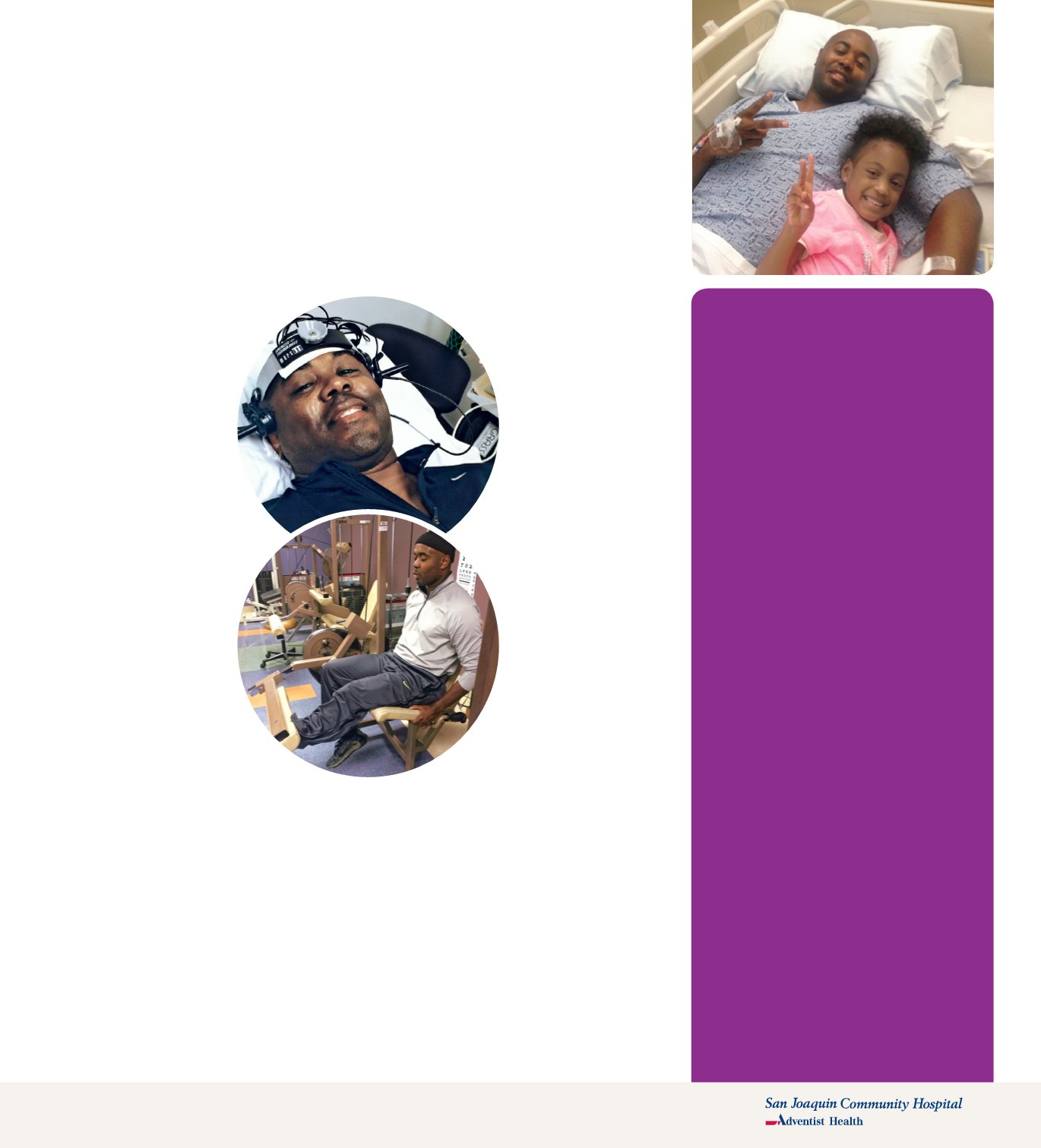

3
Welcome home!
How to help a loved one
recover from a stroke
Someone very dear to you is coming
home after surviving a stroke. Your
happy anticipation might be tinged with
a bit of anxiety.
That’s to be expected, according to the
American Stroke Association (ASA). Most
people who find themselves caring for a
loved one after a stroke come to the job
with no prior experience.
Here are some tips from the ASA to
help you and the person you’re caring
for navigate this recovery period.
Get answers.
Do you know what each
medication is for? Should your home be
modified to accommodate your loved
one? Don’t be afraid to ask if you’re not
sure. Write down questions as you think
of them.
Reduce risks.
Find out how you can
help prevent a second stroke. This may
include preparing healthy meals and
making sure your loved one gets to all
follow-up medical visits.
Be alert to changes.
Monitor prog-
ress, and let your doctor know if you
see any changes in the person’s abilities,
behavior or attitude. Remember that
depression is common after a stroke and
is best treated early.
Stay positive and be patient.
No two
people recover from a stroke the same
way. Improvements may take months.
Ask for help when you need it.
You
can’t take care of someone else unless
you take care of yourself.
HT
PLACE,
RIGHT
TIME
and suggested that I get a
CT scan or MRI in the next
couple of days.”
But Terrance didn’t have
a couple of days.
That night, while
watching TV in bed, he
knew something was terribly
wrong.
“Tingles went through my
entire body. The room began
spinning, and I quickly realized
that I couldn’t stand up out
of bed.
“I figured I was having
a stroke,” Terrance says.
“I ended up on the floor,
trying to crawl over to my
phone—but I wasn’t able to
get there.” That’s when he
started to pray.
Fortunately, his 26-year-old
son had recently moved back in
with him. Terrance didn’t know if he was
home but managed to yell for him three times.
On the third cry, his son burst into the room and
immediately called 911.
The EMTs quickly arrived and told Terrance
they were taking him to San Joaquin Community
Hospital (SJCH)—home to Kern County’s most
experienced stroke team. For Terrance, the
experience was nothing short of top-notch, he
says.
“When I arrived, they whisked me through the
Emergency Room. In less than a minute, a phy-
sician began taking care of me. I was impressed
with how seamless the care was throughout the
entire process.”
Terrance had indeed
had a stroke. He learned
that the vision problem
he had in Los Angeles
was what is sometimes
called a mini-stroke. He
spent eight days at SJCH,
finally being discharged
to a long-term stroke
care facility. Just 12 weeks
later, he’s nearly back to
100 percent.
Good fortune
and faith
”Considering all that
happened, I’m very
fortunate to be here,”
Terrance says.
From the beginning, he’s
chosen to focus on the pos-
itive. “Having a good attitude
is really easy when things are
going well, but what happens when
life throws you a curveball? When you’re
down, you’ve still got to be positive. No matter
what you’re going through, every moment is an
opportunity.”
He also considers himself blessed to end up at
the right place—a hospital where medicine and
faith meet.
“When I realized I was having a stroke, the
first thing I did was pray,” Terrance says. “It’s
no coincidence that I ended up at San Joaquin
Community Hospital—that place was a godsend
for me. I would recommend [SJCH] for all health
care needs—stroke, heart attack, broken leg—it
doesn’t matter. I wouldn’t go anywhere else.”

















